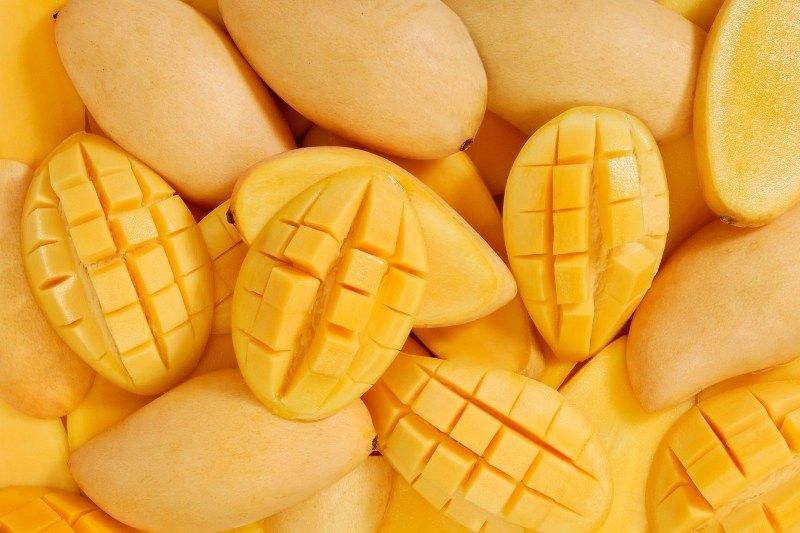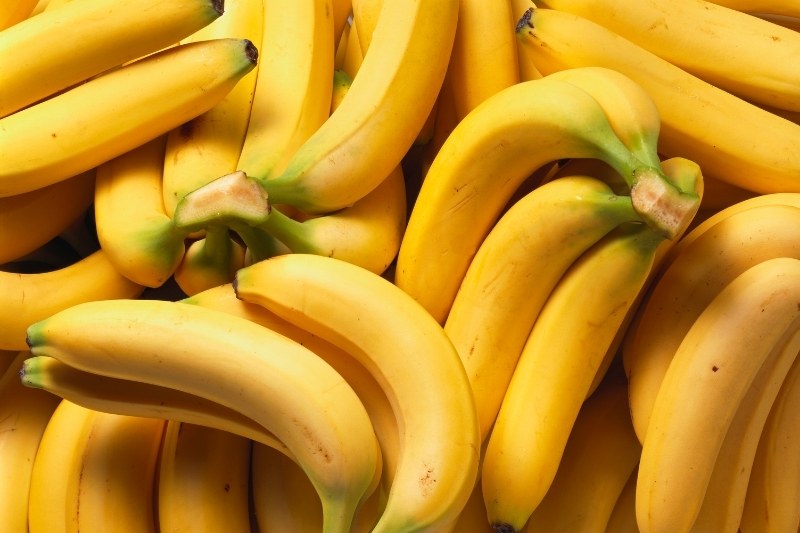Can dogs eat mangos? – A veterinarian’s answer

Mango is one of the most popular and appreciated tropical fruits in the world. Its cultivation began more than 4,000 years ago in Southeast Asia, and it is now commonly grown in most tropical and subtropical regions of the world.
Its excellent flavor, sweetness, and refreshing qualities make it a fruit that few humans can resist. For this reason, it is common for many caregivers to wonder if their pets can eat mangos. If this is the case for you and you want to find out if mango is among the fruits that dogs can eat, do not hesitate to join us in this article, in which we will talk about all the details you should know about this fruit.
Can dogs eat mango?
Mango is a fruit with multiple nutritional benefits that, additionally, does not contain any substance that is toxic to the body of dogs. For this reason, mango is on the list of fruits that dogs can eat.
However, it is important to take into account a series of considerations before offering this fruit to dogs in order to prevent unchecked consumption from causing a negative impact on their health.

While you’re cooking, suddenly, your dog looks at you. You want to give them a little treat but wonder if they can eat the food you are holding in your hand.
With our vet-approved magnet, you’ll know the answer at a glance! Plus, you can quickly scan our QR code to access the full article with all the explanations.
Throughout the article, we will explain how to offer this fruit to your dog in a safe and healthy way.
What about the skin?
Although dogs can eat the pulp or flesh of mangos, it is important to know that not all parts of this fruit are suitable for our pets.
The skin or peel of the mango is tough and fibrous, making it difficult for dogs to digest. In addition, the skin may contain traces of contaminants or pesticides, which can be harmful to dogs' bodies.
Therefore, if you decide to give this fruit to your pet, it is important that you first remove the skin to avoid any unwanted effects on their bodies.
Benefits of mangos for dogs
Mangos have a number of nutritional properties that make them a suitable fruit not only for humans but also for dogs.
Summarized below are some of the most relevant nutritional benefits of this food:
- It is a source of fiber: although the digestive system of dogs is not able to digest fiber, it is an essential nutrient in their diet. Among other things, fiber regulates intestinal transit, contributes to the maintenance of the intestinal microbiota, and provides consistency to the stool.
- It is a source of vitamins: specifically, it is a fruit rich in vitamins A, C and B9 (also known as folic acid), which act as powerful antioxidants, neutralizing the effect of free radicals. It also contains beta-carotenes, antioxidant compounds that are converted into vitamin A in the body.
- It contains mangiferin: a polyphenolic compound that not only has antioxidant properties, but has been shown to have antiviral, antiparasitic, antitumor, and antidiabetic activity, as well as acting as an immunomodulator and preventing bone resorption.
In addition to its nutritional benefits, mango is a great-tasting fruit and a delicacy for most dogs. Therefore, it can be useful to use this fruit as a reward to teach dogs new commands or tricks. It will undoubtedly become one of your dog's favorite treats.
When can it be dangerous?
As we have seen, dogs can eat mango, since it is a fruit suitable for pets. However, there are a number of situations in which the ingestion of this food can be dangerous:
- Consumption in excess: although dogs can eat mango, we must keep in mind that this fruit should not be a regular food in their diet. Excessive consumption of mangos or other fruits can cause important nutritional imbalances in dogs. Therefore, whenever you decide to include this fruit in your dog's diet, remember to do it in moderation.
- Consumption by obese or overweight animals: mango is a fruit with a relatively high energy value, so it is not recommended to introduce it to dogs who require a low-calorie diet.
- Consumption of unsuitable parts: such as the skin or the seed. The only part of the mango that dogs can eat is the pulp or flesh. The other parts of the fruit can cause digestive and dental disorders, and other serious problems, such as choking or suffocation.
- Consumption by dogs with certain pathologies: for example, by dogs with chronic digestive diseases (such as IBD – inflammatory bowel disease) or dogs with food allergies. In these cases, the animals should only consume the food prescribed by their veterinarian, since the intake of other foods can cause complications with their pathologies.
What do I do if my dog has eaten a mango seed?
Mangos have a single, large, ovoid seed. Before offering this fruit to dogs, it is important to remove the seed, since its ingestion can be dangerous for their health:
- Chewing the hard seed can generate ulcers in the gums or oral mucosa of dogs, as well as cause trauma to the teeth that can lead to chipping or loss of the affected tooth.
- If an animal swallows the seed (either whole or broken), it will almost certainly cause an obstruction in the stomach or intestine. In addition, the seeds can cause erosions or ulcers in the digestive mucosa.
- Mango seeds pose a significant risk of choking or suffocation for dogs.
For all these reasons, if you notice or suspect that your dog has ingested a mango seed, it is important that you go to a veterinary center as soon as possible to evaluate the animal's condition. If the seed is obstructing the digestive tract, it will be necessary to extract it by endoscopy or surgery (laparotomy).
How should I feed my dog mango?
Before offering mango to our dogs, it is important to prepare it properly:
- First, you must select a mango that is ripe enough.
- Next, peel the mango and remove the seed from the middle. Remember that the skin and seeds are not suitable for dogs.
- Once you have separated the pulp, cut it into cubes of about one centimeter.
If it is your first time giving this fruit to your dog, offer them only a small portion and watch out for any undesirable effects on their health.
How much mango can my dog eat?
Although dogs can eat mango, it should not be a regular food in their diet. Remember that you should only offer this fruit in moderation.
The most advisable option is to use mango sporadically, as an alternative to commercial treats (about two or three times a month, for example). Here are some serving guidelines based on size:
- 2-3 pieces for small dogs
- 5-6 pieces for medium dogs
- 7-8 pieces for large dogs
If it is your first time giving this fruit to your dog, offer them only a small portion and watch out for any undesirable effects on their health.
Can dogs drink mango juice?
Although dogs can safely eat mango, it is not recommended for them to drink mango juice. This is because mango juice has a higher glycemic index, i.e., it causes much higher sugar spikes than eating the whole fruit.
The fiber contained in mango pulp helps to release fructose gradually into the bloodstream, which prevents rapid rises in blood glucose (hyperglycemia). However, in mango juice the pulp is usually eliminated, and with it, the fiber, which causes peaks of hyperglycemia that are not recommended for canine health.
Mango alternatives
Mango is among the foods that dogs can eat, however, there are many other fruits suitable for dogs. Here are a few examples:
- Apples
- Pears
- Melons
- Strawberries
- Blackberries
- Blueberries
- Raspberries
Conclusion
As all this evidence suggests, your dog can eat mango and benefit not only from its flavor, but also from its great nutritional properties. However, it is important that you take into account both the amount of this fruit that you give and the way you give it, in order to guarantee a safe and healthy intake for your pet.

DogsPlanet.com is one of the main websites for dog owners, future owners and dog lovers. Our team of authors seeks to answer the questions that you frequently ask yourselves.








